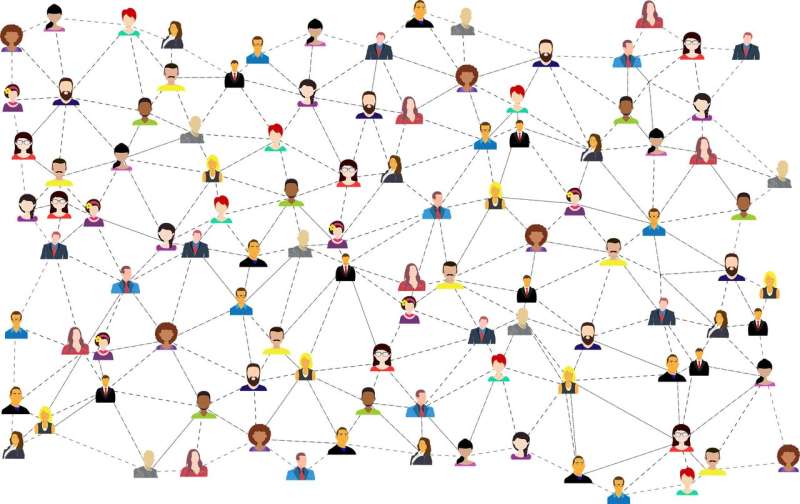Credit: CC0 Public Domain
Online social networks claim to make connections and bring people together. But the ranking and recommender algorithms that suggest for instance whom to connect with, or who the most relevant scientists in a field are, are not fair. A study just published in the journal Scientific Reports shows that the algorithms can exacerbate inequalities and discriminate against certain groups of people in top ranks.
The study investigated how social mechanisms influence the rank distributions of two well-known algorithms, i.e., PageRank, one of the main algorithms on which Google's search engine is built, and Who-to-Follow, Twitter's algorithm which suggests people you aren't currently following that you may find interesting.
"It has been shown in the past that ranking algorithms tend to increase the popularity of users that are already popular and that can lead to loss of opportunities for certain groups of people," explains Lisette Espín-Noboa, a computational social scientist at the Complexity Science Hub Vienna (CSH) and the first author of the paper. "We wanted to understand when these algorithms can go wrong, depending on the structure and characteristics of a network."
Understanding algorithms
The team simulated different networks, composed of 2,000 individuals, and adjusted the social mechanisms of relationships between the individuals in each network. The scientists were able to make variations in the properties assigned to each network, such as the proportion of the minority, how active users were in connecting with other users, and the way people connected in the network. In particular, the researchers were interested if individuals associated more likely with others who were already popular, and if they tended to link with those who were similar to them. To prefer others that are similar to oneself is a principle social scientists call homophily ("birds of a feather flock together").
Main social mechanism
The researchers found that the main social mechanism responsible for distorting the visibility of minorities in rankings was in fact homophily, together with the proportion of the minority. "We see that when the majority group associates mostly with other members of the majority, the minority group is underrepresented in top ranks," explains Espín-Noboa. "However, minorities can overcome this underrepresentation by connecting strategically with others and can try to achieve at least statistical parity in top ranks."
Statistical parity means that if the minority represents 20 percent of people in the network, the same ratio should be reflected in each top-k of the rank. "One way to increase the visibility of minorities in the rank is by making them more active in the network," says Expín-Noboa. "This means, minorities should create more connections to others."
Another way that could make minorities more visible is by diversifying the connections of the majority: by creating more connections from the majority group to the minority group, finds the study.
More realistic scenarios
"We have seen in an earlier study how homophily can influence the ranking of minorities," says co-author Fariba Karimi who leads the team "Network Inequality" at the CSH. "This paper assumes more realistic social network scenarios and is looking not only at ranking algorithms, but also at social recommender algorithms that social network platforms such as Twitter use," she says. "Our new findings suggest that ranking and recommender algorithms in online social networks such as Twitter can indeed distort the visibility of minorities in unexpected ways."
More information: Lisette Espín-Noboa et al, Inequality and inequity in network-based ranking and recommendation algorithms, Scientific Reports (2022). DOI: 10.1038/s41598-022-05434-1
Journal information: Scientific Reports
Provided by Complexity Science Hub Vienna























